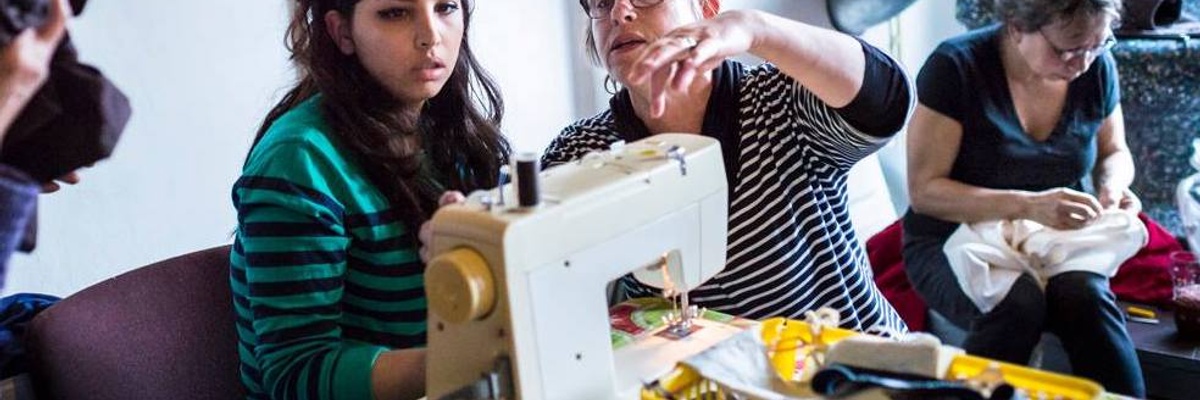
"Welcome to the ChangeX Repair Café guide! We're delighted you're thinking about organizing a Repair Café in your community. Here you’ll find all the information, practical tips and resources you need. There is someone to help you at each stage of the journey so don't be afraid to get in touch!" - Martine Postma, Founder of Repair Café

As a Repair Café local organizer you will need about 4 hours a week to get your Café up and running, a full day to run your first Café and then 2 hours a week to maintain the group and organize subsequent Cafés.
The most successful Repair Cafés are a collaborative effort, plus, it's far more fun if you’ve got support and can share the workload! Find other interested people to help you. You will need a team of approximately 5 people. Assign different roles to each person, including sourcing materials, finding a venue and experts and spreading the word to the community.
You will also need to recruit a few volunteer organizers for the day of the Repair Café, who will pick up donated food, sign in people and manage the liability waivers, set up tables and spread good repair vibes on the day of the event!
The next step is to register your Repair Café and download your starter kit here. The starter kit contains all sorts of materials, tips and branding to assist in setting up your Repair Café. Registering also means your Repair Café will be added to a worldwide list of Repair Cafés and once your first event is set up the international Repair Café Foundation will help to publicise it. The suggested donation to register and download the kit is approximately $60 but you can pay as much or as little as you see fit. The donation supports the international Repair Cafe Foundation to continue its work.
The next step is to find the right experts to lend a hand making repairs in your Repair Café! It's impossible to repair toys, printers, or hair driers without the people who know how to do it. It's also challenging to do so without some vital pieces, like power and tools.
Usually one will lead to the other. If you can hook up with the fixers in your community, chances are they will have some of the tools needed and/or point you in the right direction to locate them.
Start small - ask you neighbors, relatives or friends who have an interest in DIY to help. Just using your own network you can go a long way in manning all the basic stations in the Repair Café.
Next, look up local Employment Services and Employment Programs to find people who may be retraining in electronics, carpentry, plumbing, or metalwork and might be interested in volunteering their time to help out at your Repair Café. Pay a visit to craftspeople in the neighborhood as well. You never know, a furniture maker might like to attend a Repair Café as a carpenter (and advertise his own furniture workshop at the same time). Or perhaps the tailor around the corner would like to get involved. Try getting in touch with institutes for professional education. By taking part in Repair Café, students in various courses (technology, woodwork, fashion design) could gain additional practical experience and credit.
Last but not least, you can try to find people through volunteer networks such as thrift stores or you can approach local associations like a carpentry club, a computer club or a local Men's Shed .
A key action in getting your Repair Café up and running is to find a venue. Repair Cafés usually take place every couple of months, for a full day.
A key principle of the Repair Café is that it should, if possible be free of charge to attend, so it’s preferable that you source the venue free of charge. Repair Café is an activity both for and by neighbors, so it's best to choose a place that is lowkey, easily accessible and in the heart of a residential area
It needs to be big enough to accommodate a large number of tables, where various repair experts can sit with visitors to repair items. They need to be big tables to have room for all the experts’ tools. Some examples of suitable venues are community, sports or church halls. You can also tap local businesses that make space available on weekends and get their employees involved all at once. An advantage of using a public space is that you won't have to worry about public liability insurance, which should already be covered. You shouldn't need any other insurance for the Café - you can ask those who bring items to be fixed to sign a liability waiver.
Now that you have everything ready, pick a date (weekends are best) and start planning your first event!
Food provides not only the necessary energy for hard-working handy people and visitors but it's the glue that binds the community together. Make sure you have tasty donated treats lined up from local businesses or ask each of the organisers and volunteers to bring a dish of their choice, or alternatively use some of your seed funding from ChangeX to buy refreshments.
Get the word out there! This can range from emails to your personal networks to contacting local community groups, businesses, or even your local newspaper or TV station. Make sure you publicize the kind of repairs you're prepared for. For example, if you have tailors with sewing machines, you can give the green light to visitors with clothes in need of stitching.
From active participants eager to learn how to fix their own things all the way to people who just want to get their toaster toasting again, expect to accommodate a whole spectrum of people. There will be a lots of neighbors to meet and stories to share. Enjoy the day, take lots of photos and then start planning the next Repair Café!